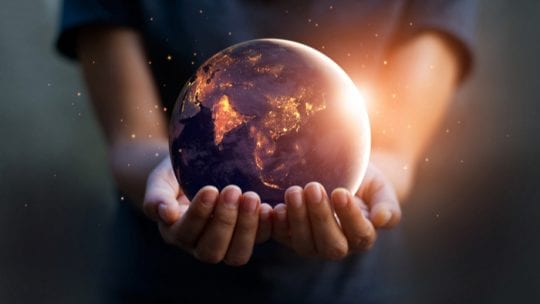
[Editor’s Note: With the arrival on April 22 of Earth Day, our History column looks at the largely unknown role several PR pros played in developing awareness for environmental CSR.]
Last year we celebrated the 50th anniversary of Earth Day, securing an opportunity to drive climate change awareness conversations as pollution levels were at record lows around the world.
Although we’ve made strides in climate change awareness since the first Earth Day, in 1970, and the negative effects of climate change were famously publicized in Al Gore’s “An Inconvenient Truth” (2006), it has been more than 10 years since there’s been a push for a stronger, more focused effort to preserve the planet and work toward a greener future.
As effects of the pandemic on the environment move from positive to potentially even worse than before, businesses and agencies can use examples from the history of environmental PR to understand the significance of CSR programs and effective environmental communications.
Beginnings of CSR, Environment Policies
What did AT&T have in mind when it hired its first manager of environmentalism, Marilyn Laurie, in 1970?
Laurie worked on communication plans for the first Earth Day. After creating an environmental supplement for the New York Times, Laurie never imagined she would receive a call from an AT&T executive inviting her to immediately join as a B-level district manager. That’s where she wrote Bell Labs’ environmental policy and created programs that AT&T still uses.
Laurie wasn’t an expert on the environment when she started working in corporate America. She was an English major, full of passion and ambition, who understood the underlying principles of PR and being socially responsible. Looking back, she considered herself an environmentalist first.
Marilyn advised AT&T and its employees on being mindful of the public and the planet, creating CSR initiatives for Bell Labs, and ultimately AT&T, as early as the 1970s, pushing for transparency and helping the corporation earn trust and respect from its public.
The executive who happened to be flipping through her work in the New York Times certainly envisioned the importance of what she would eventually do for AT&T.
To this day, corporations use PR tactics and strategies within their CSR programs and campaigns as they work to save the planet.
The Father of Environmental PR
Sadly, E. Bruce Harrison, also known as The Father of Environmental PR, passed earlier this year.
Harrison wrote “The Environmental Communication and Public Relations Handbook” (1992), along with two other books on environmental PR. In addition, he founded a firm specializing in environmental PR in 1973. It was sold to Ruder Finn in 1997.
Harrison’s first memory of having a calling for environmental PR was at 16, where he wrote about the way his town’s cotton mill engaged with the surrounding community.
The “publicity guy” who introduced these interactive and feel-good gatherings for the cotton mill community fascinated the young Harrison.
Before becoming an expert in environmental PR, Harrison was a cub reporter. Most famously, he was a member of the Environment Commission of the International Chamber of Commerce, where he helped to organize the 1992 United Nations Conference on Environment and Development.
His work set a precedent and offered many guidelines for today’s PR professionals, who dedicate themselves to preserving the environment and educating the public on sustainability.
PR and Climate Change Awareness Today
Today, non-profits create campaigns to draw awareness to environmental issues and effective sustainability efforts. PR agencies and in-house environmental PR pros alike advise corporations on doing better for the planet and its inhabitants.
Since the first Earth Day, we’ve learned a lot about the effects of climate change, according to Smithsonian Magazine. We are facing various environmental crises around the world. The culprits include pollution, racism and the coronavirus pandemic.
Activism and social movements always will be the true champions of the fight for a brighter future—but PR will play a key role helping to raise awarness en route to action. n
Contact: [email protected]
